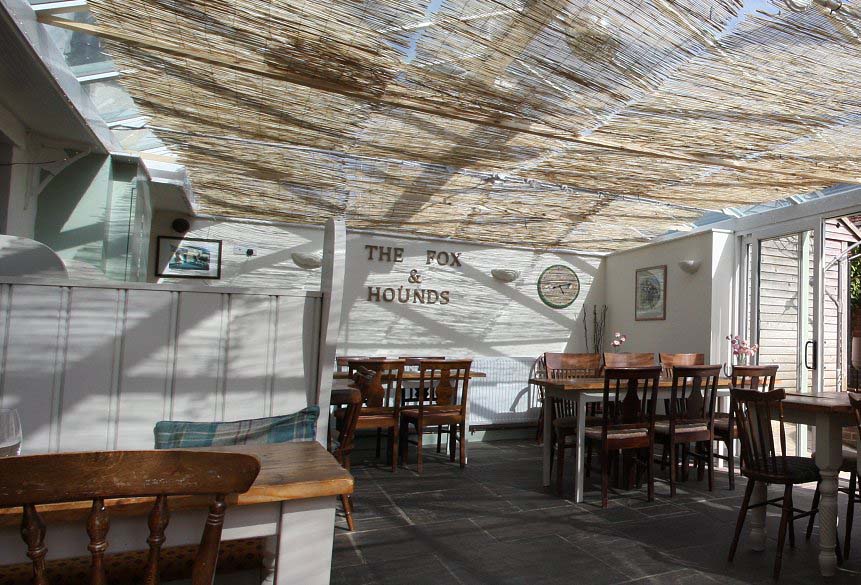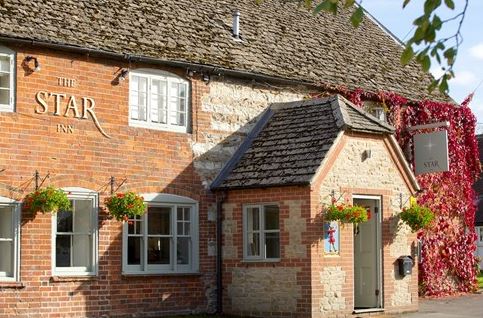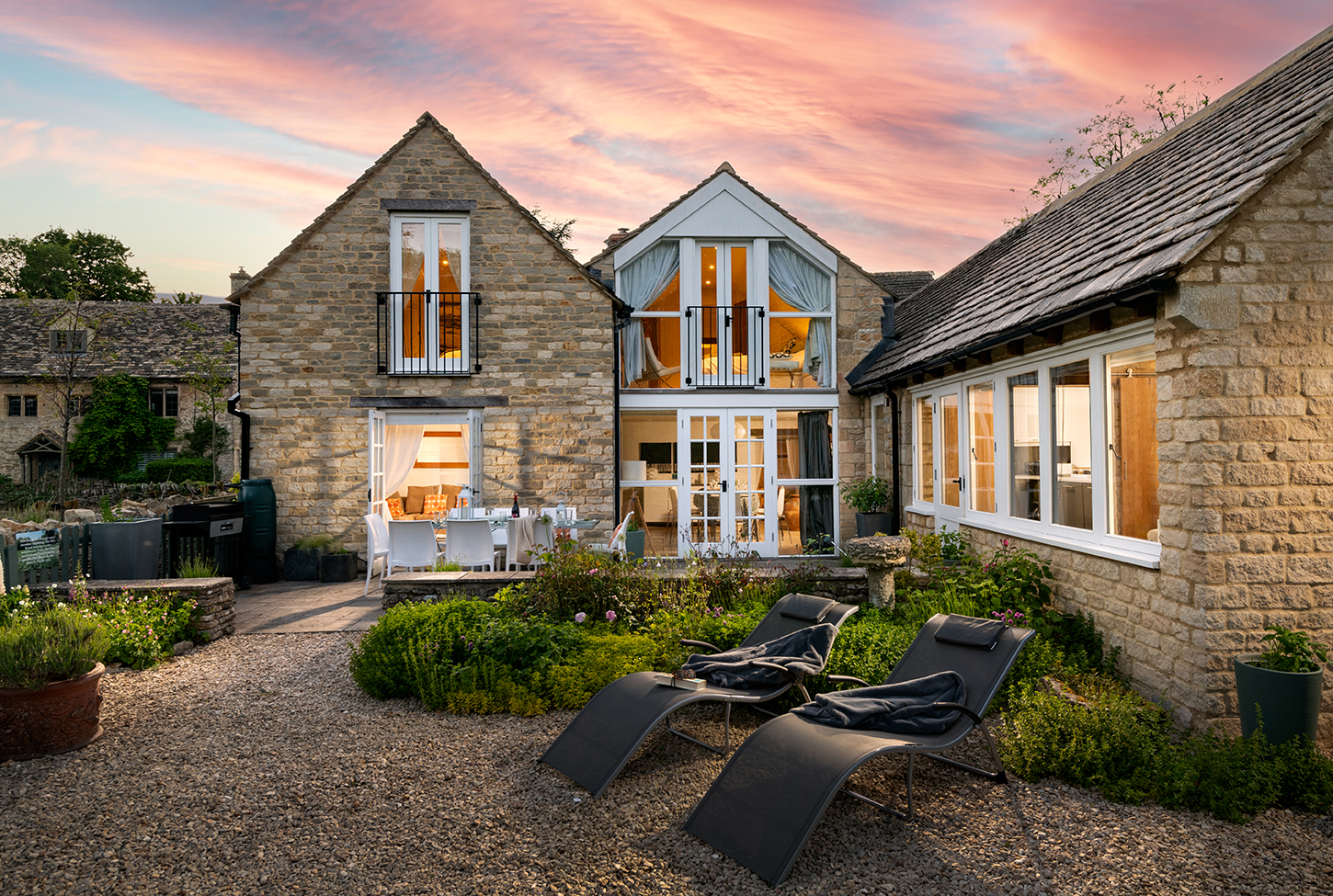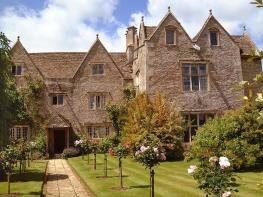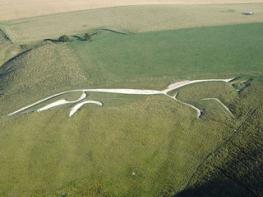The Old Crown Coaching Inn is a historic coaching inn at the heart of Faringdon, lovingly…
Faringdon's follies

6.2 miles (10kms)
About the walk
Britain’s follies are fascinating, their exuberance and eccentricity often reflecting the character of those who built them. A typical example is Gerald Tyrwhitt-Wilson, 14th Lord Berners (1883–1950), whose name alone conjures up images of the stereotypical upper-class twit or chinless wonder immortalised in old, much-loved British comedy films. Widely regarded as Britain’s last major folly tower and very much a local landmark, Faringdon Folly dates back to 1935. While out walking on Folly Hill one day, Lord Berners turned to his companion, Robert Heber-Percy, and commented that the hill would look even better with a folly built on it. Berners was far from conventional. He was, in every sense of the word, a gay lord – colourful, generous, talented, amusing and unmarried. Berners embodied all the characteristics of the classic British eccentric. Typically, whatever he did was characterised by a dash of mischief.
Aside from his sense of fun and dry mocking humour, Berners was one of life’s naturally gifted players. He was an accomplished writer, painter and composer – Stravinsky called him the best British composer of the 20th century and Diaghilev commissioned him to compose the score for the ballet Triumph of Neptune. During his time at Faringdon House, he hosted many glittering parties and among his regular guests were some of the most talented figures of the pre-war arts world.
Word quickly spread that Berners was planning to build on the hill, provoking strong opposition among neighbouring landowners. Berners won his battle, however, and completion of the 100ft (30m) tower was marked by a spectacular party and fireworks display on 5 November 1935.
Faringdon Folly is a curious mix of styles. Berners commissioned his friend Lord Wellesley to build the tower, choosing a Gothic design which the architect deplored. While Berners was abroad, Wellesley began construction work, but when his client returned he discovered the tower bore no resemblance to his specification. Instead it followed classical lines. Berners immediately ordered that the tower be completed in ornate Gothic. Robert Heber-Percy, who lived with Lord Berners at Faringdon House, gifted the tower to the town of Faringdon in 1983.
Walk directions
Follow the car park exit road and turn left at the T-junction. Make for the town centre, following Gloucester Street along to Cornmarket. Pass The Red Lion and The Bell Hotel, cross the Market Place by keeping to the right side and pass The Folly Inn. Turn right into Stanford Road, then left at the sign for Folly Hill. Take the path, following it as it begins a moderate climb to Faringdon Folly. Keep to the right of the tower, emerge from the trees and continue ahead down the slope to a stile. Go straight ahead across the field to a gap leading out to the A420 road.
Cross over carefully to a field gate and go ahead, but on reaching a new plantation among older trees, bear half right, aiming to strike the Wadley Lodge drive to the left of a defunct white gate. Now with a pond well to your right, aim for a distant white metal gate. Keep left here, following trees and bushes along the field-edge. Make for the corner and pass through a gap to continue ahead on the bridleway, cutting across fields with woodland over to the right. This is Hatford Gorse and just beyond it is Tagdown Barn. Follow the bridleway to a house and join the road on a hairpin bend. Keep ahead to a left curve. The bridleway runs straight on.
Follow the lane to the A420, cross over carefully again and take the drive ahead towards Barcote Park. Turn left at the footpath sign and cross the field to a stile. Cross this and head down the field and through a line of trees to two stiles with a bridge between, and head up the slope to a kissing gate. Keep left beside a fenced playing field then join a drive to the road, turn right and walk through the village of Littleworth.
As the road bends sharp right by Hill House, go up left through the gate marked Chapel House. Follow the track to the right for a few paces to a stile and gate. Take the path west across the field, with Faringdon Folly in the distance. This field is over 0.5 mile (800m) across! Cross a stile, keep to the right of the farm outbuildings, negotiate two stiles with a track in between and walk ahead. Make for gates in the field corner, continue ahead in the next pasture and approach a house. Keep to the right of it, walk for a 0.25 mile (400m) between hedge and fence. Go through a gate and a kissing gate to join a farm track towards Faringdon. Continue ahead on the road and round to the Market Place, bearing right to return to the car park.
Additional information
Roads (mostly quiet), field paths, drives and tracks, many stiles
Gently rolling farmland
On lead where indicated
OS Explorer 170 Vale of White Horse
Long stay car park off Gloucester Street, Faringdon (pay and display)
Southampton Street car park (by The Bell Hotel)
WALKING IN SAFETY
Read our tips to look after yourself and the environment when following this walk.
Find out more
Also in the area
About the area
Discover Oxfordshire
Located at the heart of England, Oxfordshire enjoys a rich heritage and surprisingly varied scenery. Its landscape encompasses open chalk downland and glorious beechwoods, picturesque rivers and attractive villages set in peaceful farmland. The countryside in the northwest of Oxfordshire seems isolated by comparison, more redolent of the north of England, with its broad views, undulating landscape and dry-stone walls. The sleepy backwaters of Abingdon, Wallingford, Wantage, Watlington and Witney reveal how Oxfordshire’s old towns evolved over the centuries, while Oxford’s imposing streets reflect the beauty and elegance of ‘that sweet city with her dreaming spires.’ Fans of the fictional sleuth Inspector Morse will recognise many Oxford landmarks described in the books and used in the television series.
The county demonstrates how the strong influence of humans has shaped this part of England over the centuries. The Romans built villas in the pretty river valleys that thread their way through Oxfordshire, the Saxons constructed royal palaces here, and the Normans left an impressive legacy of castles and churches. The philanthropic wool merchants made their mark too, and many of their fine buildings serve as a long-lasting testimony to what they did for the good of the local community.
Nearby stays
Restaurants and Pubs
Nearby experiences
Recommended things to do
Why choose Rated Trips?
Your trusted guide to rated places across the UK
The best coverage
Discover more than 15,000 professionally rated places to stay, eat and visit from across the UK and Ireland.
Quality assured
Choose a place to stay safe in the knowledge that it has been expertly assessed by trained assessors.
Plan your next trip
Search by location or the type of place you're visiting to find your next ideal holiday experience.
Travel inspiration
Read our articles, city guides and recommended things to do for inspiration. We're here to help you explore the UK.


